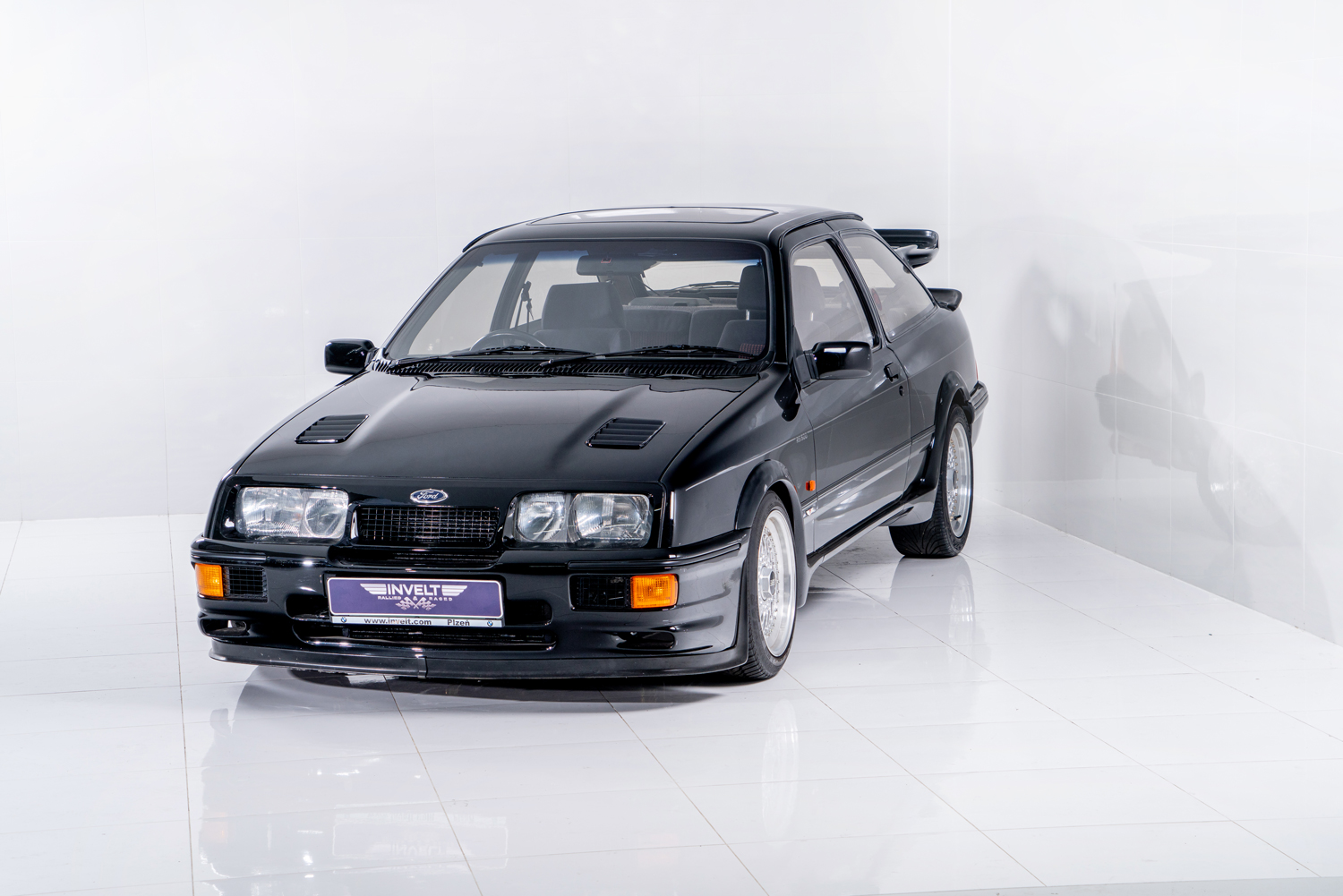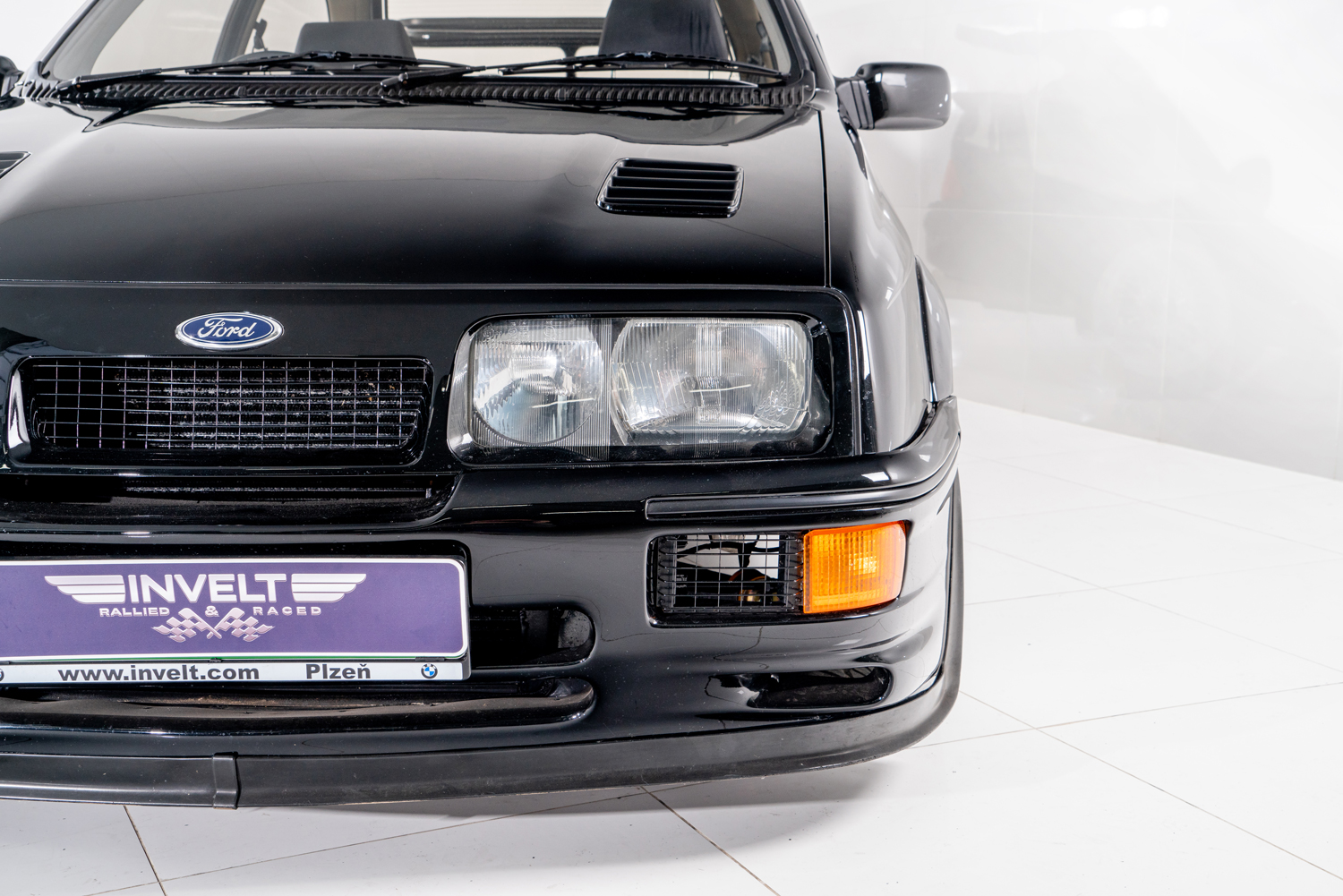MODEL HISTORY
In 1983, the European Ford found itself in a situation it had not been in for a long time. The first and second generation Escorts have garnered a great deal of sporting success across the motoring disciplines, but their time was over and there was no other machine on the horizon that could replace them. That's why the new head of Ford Motorsport, Stuart Turner, was looking for possible ways, and one of them was the construction of a homologation special for the growing Group A, which could take part in both circuit racing and rally. The hot candidate for this role was the 1982 Sierra - a revolutionary car at the time, that had very good air resistance parameters, rear-wheel drive and also needed to enhance its reputation, which was not very dazzling after its launch.
With several Sierra XR4Ti models already racing around the world, Turner's team had someone to inspire from. However, the minimum number of produced cars was 5,000 units, which at first was not easy to enforce at the sales network, which otherwise estimated the number of cars sold to 1,500 units. However, by cleverly engaging responsible people in development, Turner has gradually gained full support. It should be added, that the agreement with Cosworth on the supply of engines did not make the situation any easier - the minimum number of 5,000 units did not sound that good to them, so the contract was signed for the creation of 15,000 YB series engines. This is probably also the reason for the emergence of three generations of sporty Fords with the nickname Cosworth.
The resulting variant of the three-door version was introduced at the Geneva Motor Show in 1985. To reduce the complexity of the car, and thus the cost, the Sierra was offered in only three paint options - black, blue and white. All versions also had the same gray interior, and only central locking and power windows could be selected as the optional equipment. The engine had a base power of 204 hp, acceleration 0-100 km/h in 6.5 seconds and a maximum speed of 240 km/h. In the end, 5,545 vehicles of the first three-door variant were produced in Genk, Belgium, of which 500 were taken away for conversion to the RS500 model.
This conversion was undertaken by Tickford, an Aston Martin company. All cars delivered to Tickford were right-hand drive and were manufactured on a "standard" production line in Genk (very unofficially, however, one or two left-hand pieces were created). All the modifications, that then took place at Tickford, were carried out with one intention - the possibility of fitting upgrades in the race cars. Therefore it is not surprising, that some of the modifications were inoperable on the RS500 road version - they were simply added to the production car, so that they could be installed in the race car. The model was announced in July 1987 and it received homologation a month later.
The list of modifications to the RS500 variant is relatively long, although for obvious reasons it mainly concerned the engine and chassis. The engine block with thicker cylinder block, bigger turbocharger, larger intercooler and a second series of injectors with a fuel rail were added to the engine, even though the injectors and fuel rail were only for decoration on the road version. The fuel pump and new spark plug coils, as well as the lubrication and cooling system, have also been adapted to this modification, which all resulted in the increase of the power of the unit in the standard version to 225 hp. Modifications to the car also involved cosmetic modifications to the rear wing, the fog lights in the front bumper disappeared and the air intakes to the brakes were replaced. The vast majority of Sierra RS500 models were made in black (approximately 400 pieces), the remaining 100 were divided almost equally between white and blue.
OUR CAR
Our Sierra RS500, with serial number 124, was delivered to the Channel Islands in 1987. During the first years, it was modified by the original owner several times in all directions except design. The result is a period Stage II engine modification, the rubber bushings have been replaced by polyurethane bushings and the BBS rims are 17" wide, compared to the original 15" rims.
There are invoices and labels for all modifications, the car has a service book including other on-board documentation and registration documents, it is equipped with a period radio with amplifier and a CD changer.
In our professional Rallied & Raced facility, the car has undergone a thorough inspection and a complete renovation of the chassis parts, including the brakes. In appearance, our Sierra is very close to the condition of the new car. The car is easily mobile and promises a great driving experience. The car is equipped with veteran numberplates.
DATA
- VIN - WFOEXXGBBEGG38698
DOCUMENTS
- Veteran numberplates and accompanying documentation
- An article on the history of the Sierra RS Cosworth
- Classic Car Taxation Reports 2001 & 2010
- Sierra RS500 Cosworth catalog
- Service book + invoices
- UK MOT certificate 2001
- VECTA Silhouette customer info doc (immobilizer)
- Collins performance engineering - invoices for period modifications incl. description


































